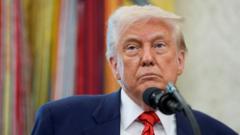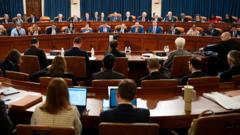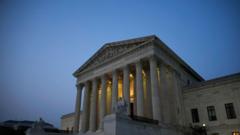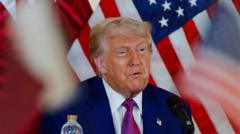The U.S. government faces significant scrutiny and challenges as Moody's downgrades its credit rating, reflecting mounting debt and expenses.
US Credit Rating Hangs by a Thread: Moody's Downgrades to Aa1
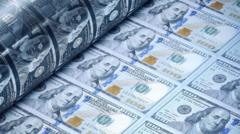
US Credit Rating Hangs by a Thread: Moody's Downgrades to Aa1
A historic drop in the US credit rating raises alarms as debt levels soar.
In a surprising turn of events, the United States has lost its last perfect credit rating, with Moody's now assigning a rating of 'Aa1' amid concerns over the government's capacity to manage its escalating debt obligations. The renowned ratings firm noted that various administrations have been unable to curb the increasing deficits and soaring interest costs associated with the national debt.
Achieving a triple-A rating symbolizes the apex of creditworthiness, illustrating that a nation is financially stable and capable of fulfilling its debt commitments. However, after maintaining this esteemed rating for over a century, Moody's has now issued a warning that the rating was under threat since 2023. The U.S. joins the ranks of countries that have seen their credit ratings dropped by other agencies—Fitch downgraded it in 2023, and S&P Global Ratings did so a decade earlier in 2011.
Moody's downgrade signifies a growing concern for investors, as it highlights the rising levels of government debt which are now well beyond those of similarly-rated nations. Responding to the downgrade, a White House statement expressed discontent with Moody's credibility, pointing fingers at the agency for previously ignoring what they described as a fiscal calamity during recent years.
The repercussions of a lower credit rating can be profound, as it increases the risk of default on sovereign debt and leads to higher borrowing costs. Notably, Moody's acknowledged that the U.S. still possesses significant economic strengths, including its massive size, resilience, and the critical role of the U.S. dollar as the principal global reserve currency. Projections indicate that federal debt could expand to approximately 134% of GDP by 2035, a marked increase from 98% recorded the prior year.
Meanwhile, economic indicators suggest a contraction, with government spending dropping and imports surging as businesses sought to stock up on goods before looming tariffs. The Commerce Department reported a sharp decline in the economy at an annual rate of 0.3% in the first quarter of the year, contrasting to a previous growth of 2.4%. This economic downturn also coincided with setbacks in Congress, where significant spending bills proposed by former President Donald Trump faced resistance from some Republican lawmakers, reflecting internal divisions within the party.


